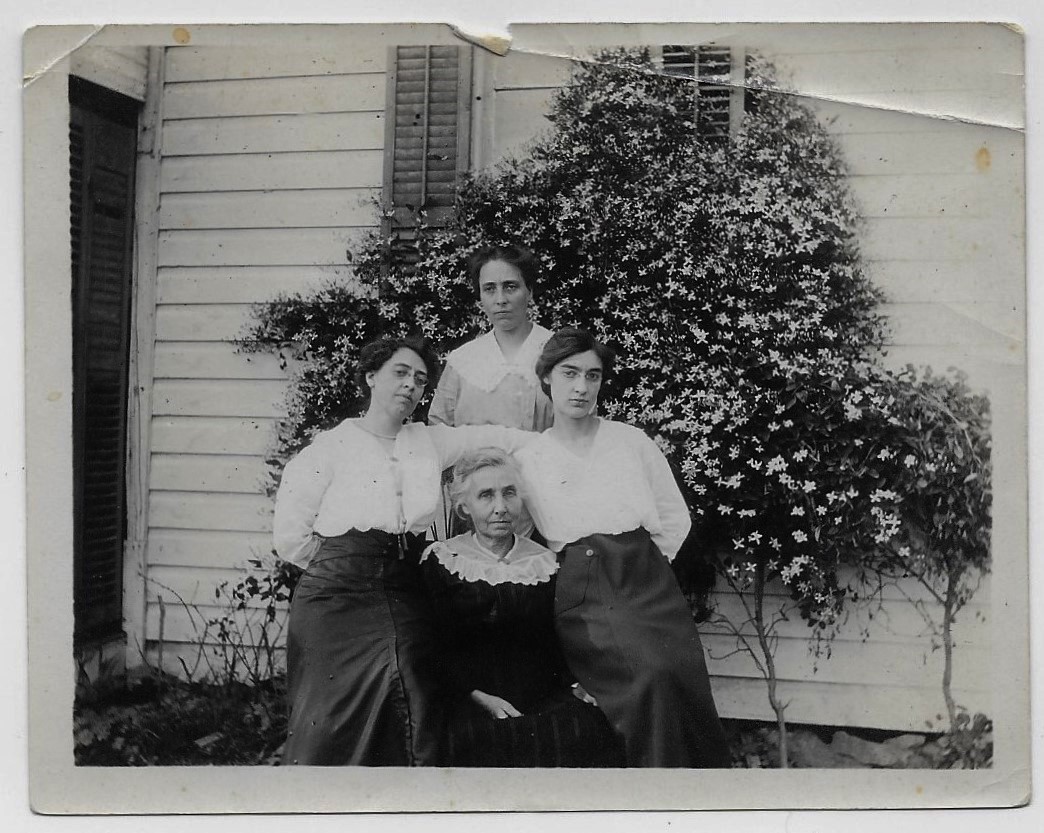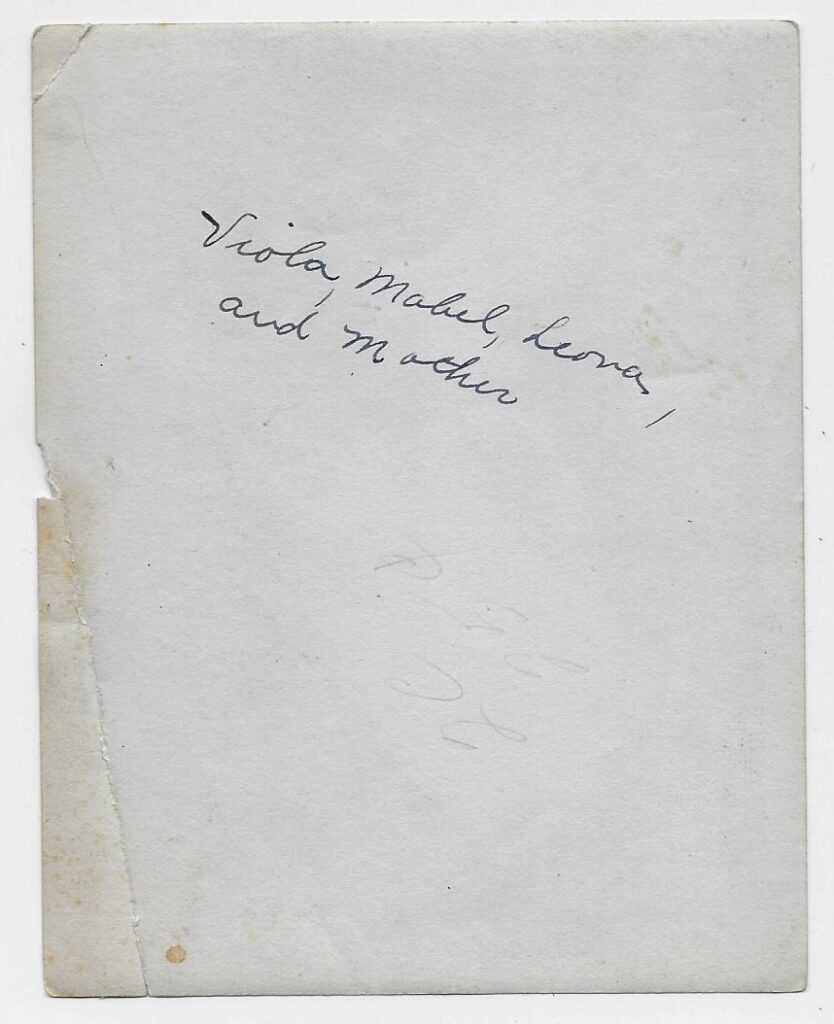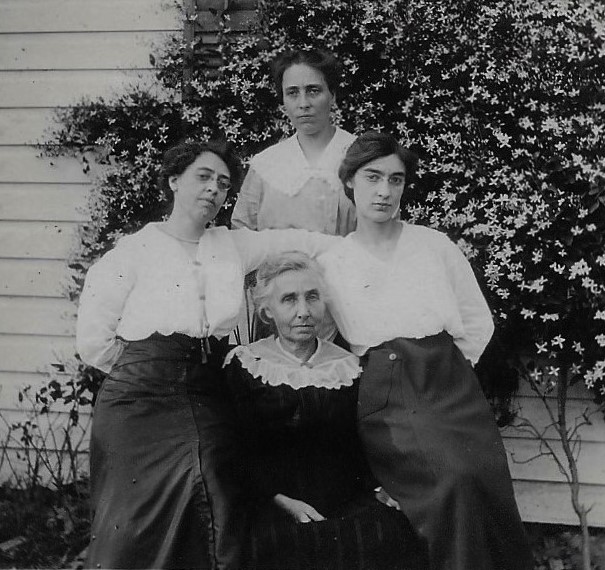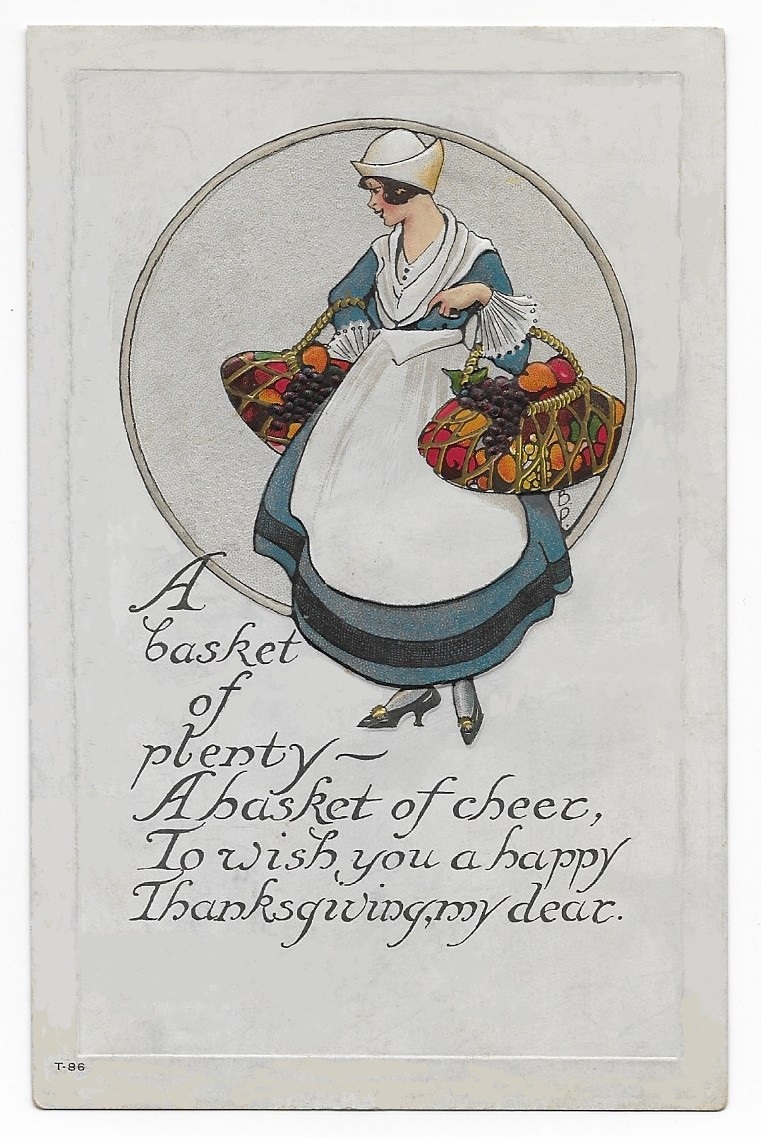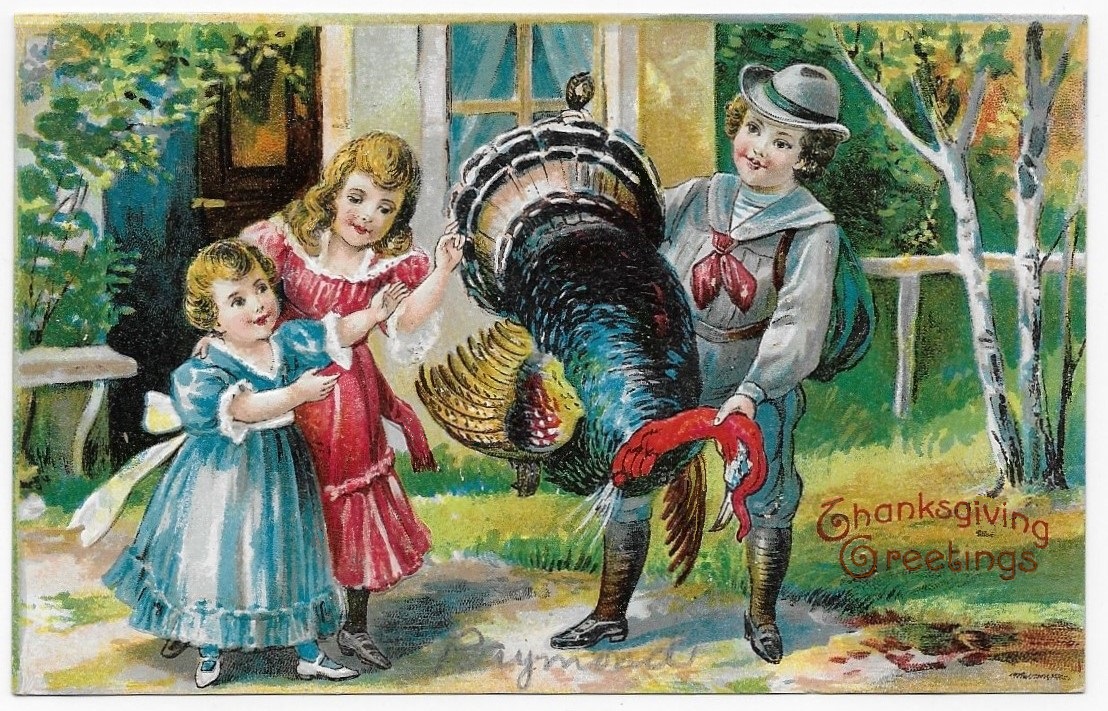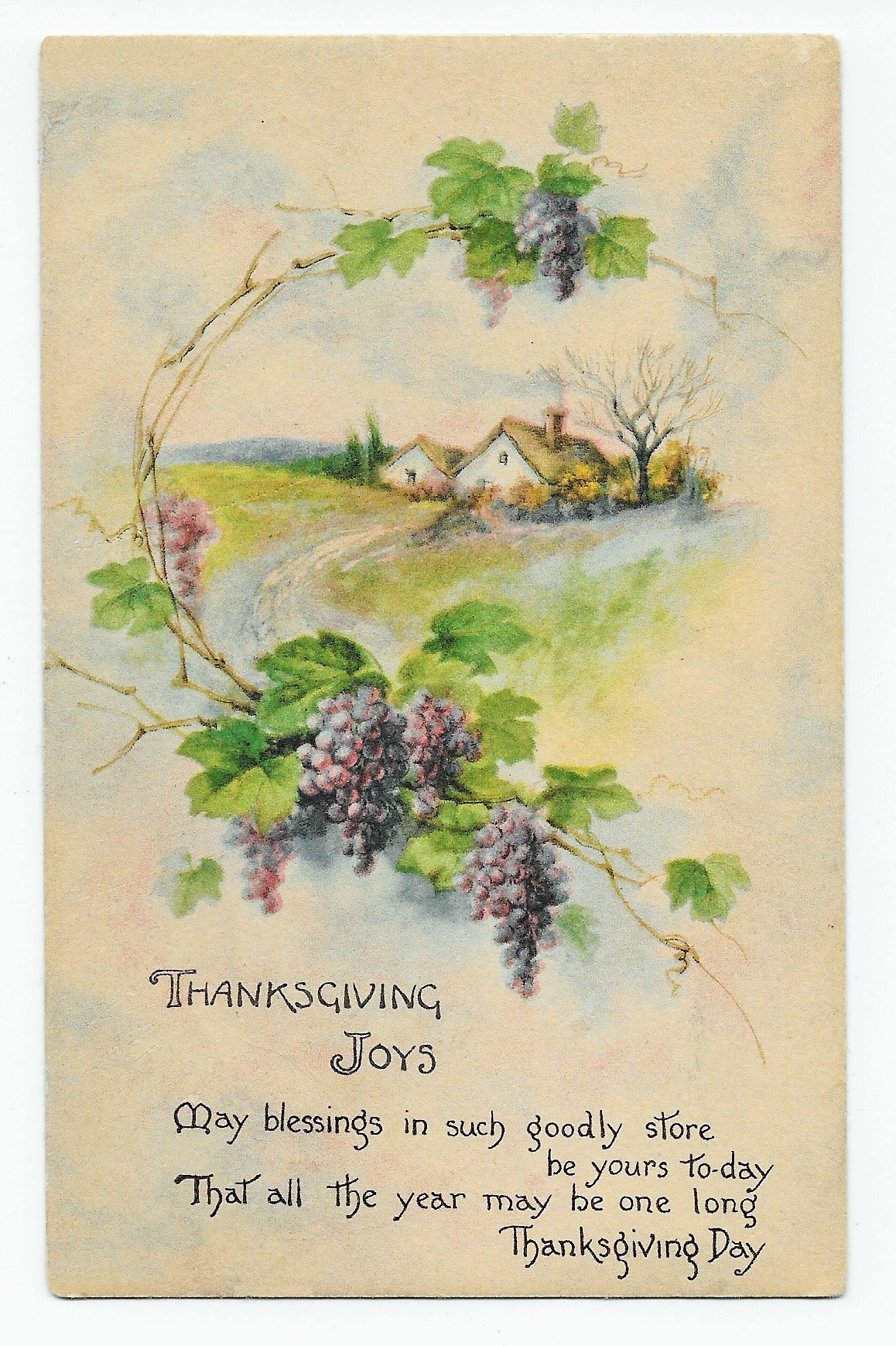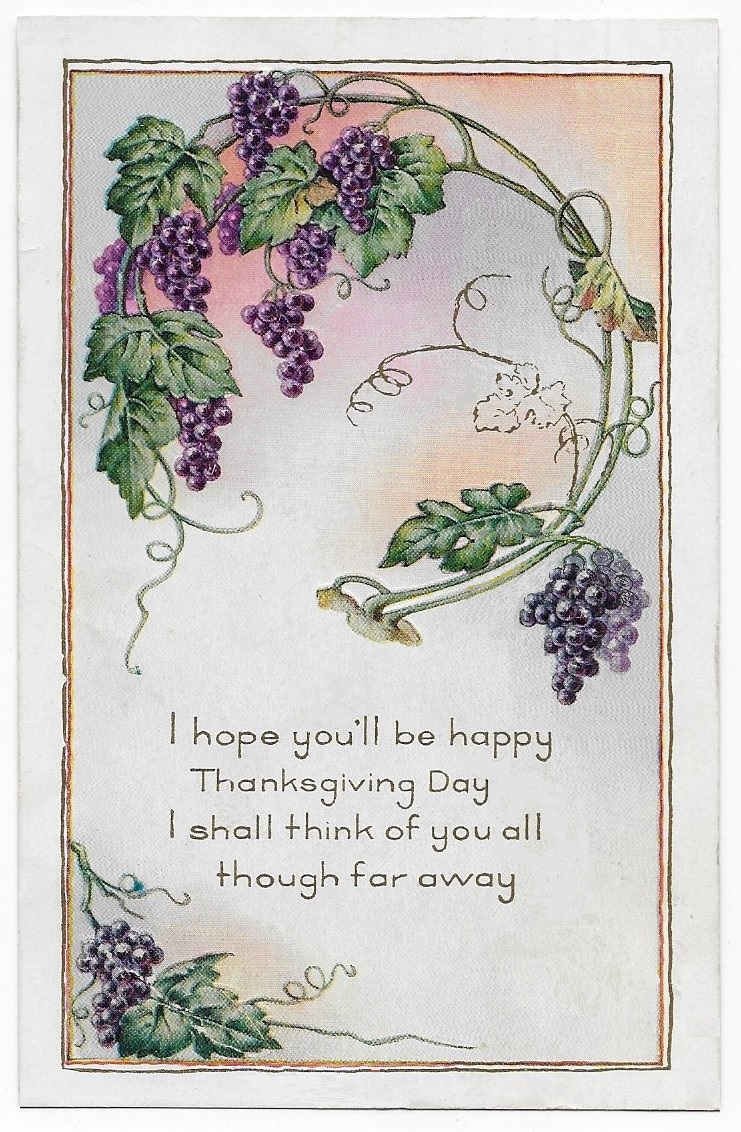This photograph, although postcard-sized, was not designed for mailing.
Here, we see an older woman in a simple black dress with an elaborate lacy collar.
Around here are three younger women – all wearing long skirts and white blouses.
The styles of the younger women’s collars are varied, one is very wide and flat, two are very understated.
All three of the young women have hair styes that do not involve buns or hair arrangements that are “up” on their heads – and all have necklines that would be very uncommon before 1920.
+ + + + + +
On the reverse, we learn that this older woman is “Mother”, and that the three attending women are her daughters – Viola, Mabel, and Leona.
Unfortunately, the thoughtful soul who made this inscription did not add a last name, a location, or a date.
Without one of these additional details, it will be almost impossible to find further information about the family.
The picture appears to be taken at the side of a house – a large climbing plant is visible behind the quartet.
Although Mother’s Day was formally proclaimed a US holiday by President Wilson in 1914, there is a long history of events honoring mothers before that time.
+ + + + + +
From the Google Summary:
“Mother’s Day’s roots extend to ancient pagan celebrations honoring goddesses of motherhood in Greece and Rome. In the United States, the holiday evolved from local celebrations and activism, eventually gaining national recognition through the efforts of Anna Jarvis. She is credited with establishing the first formal Mother’s Day celebration in 1908. President Woodrow Wilson officially recognized the second Sunday in May as Mother’s Day in 1914”
It is possible that this photograph was made to commemorate Mothers’ Day or some other celebration of mothers and daughters.
One hopes that Mother enjoyed years of happy and affectionate relationships with her three daughters.
